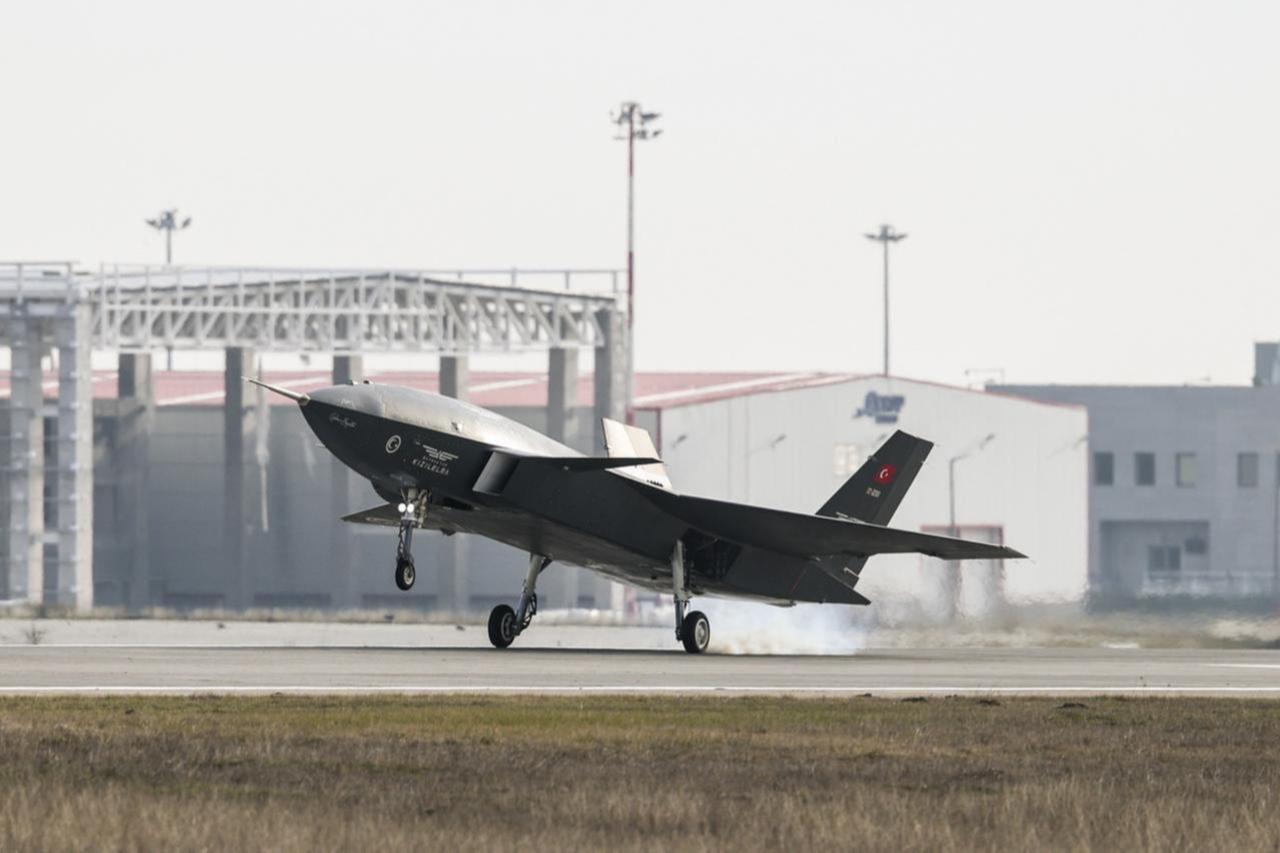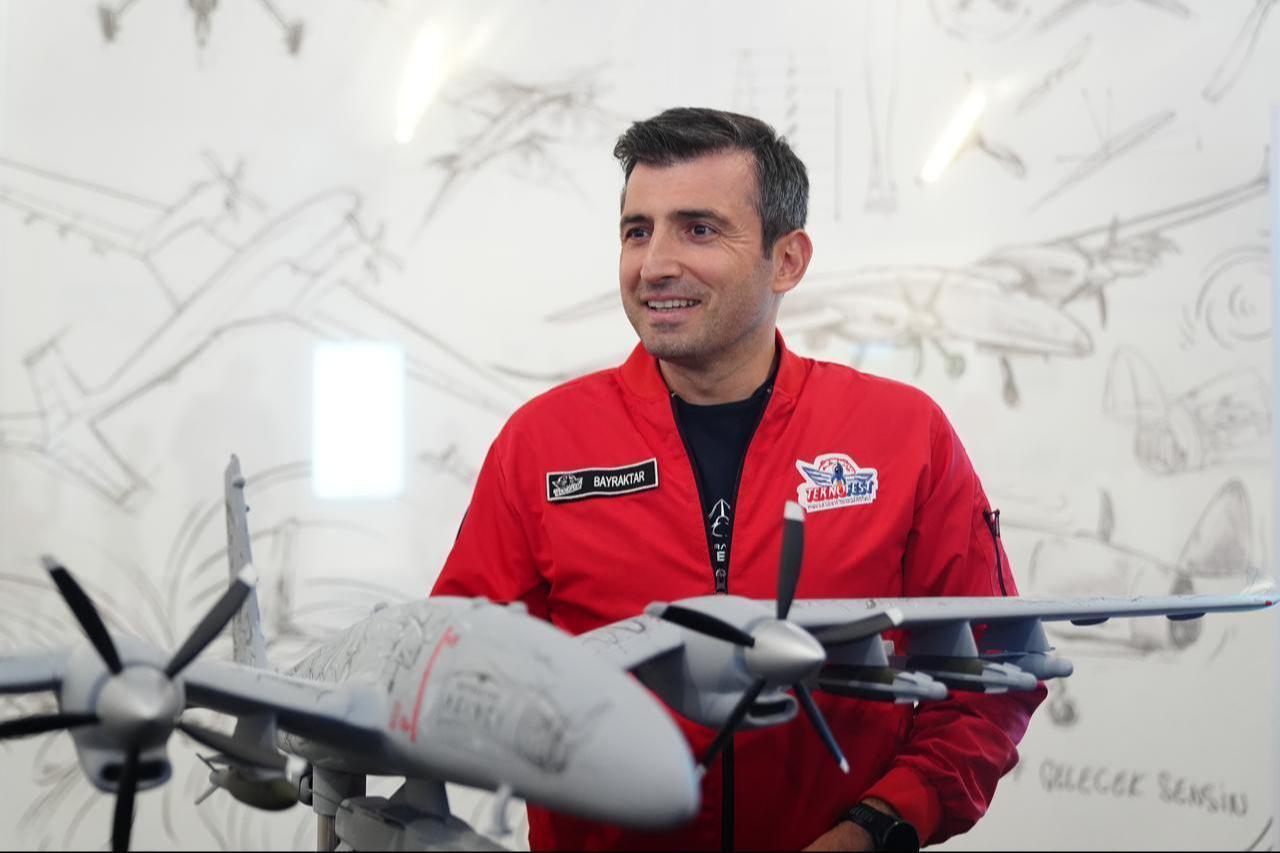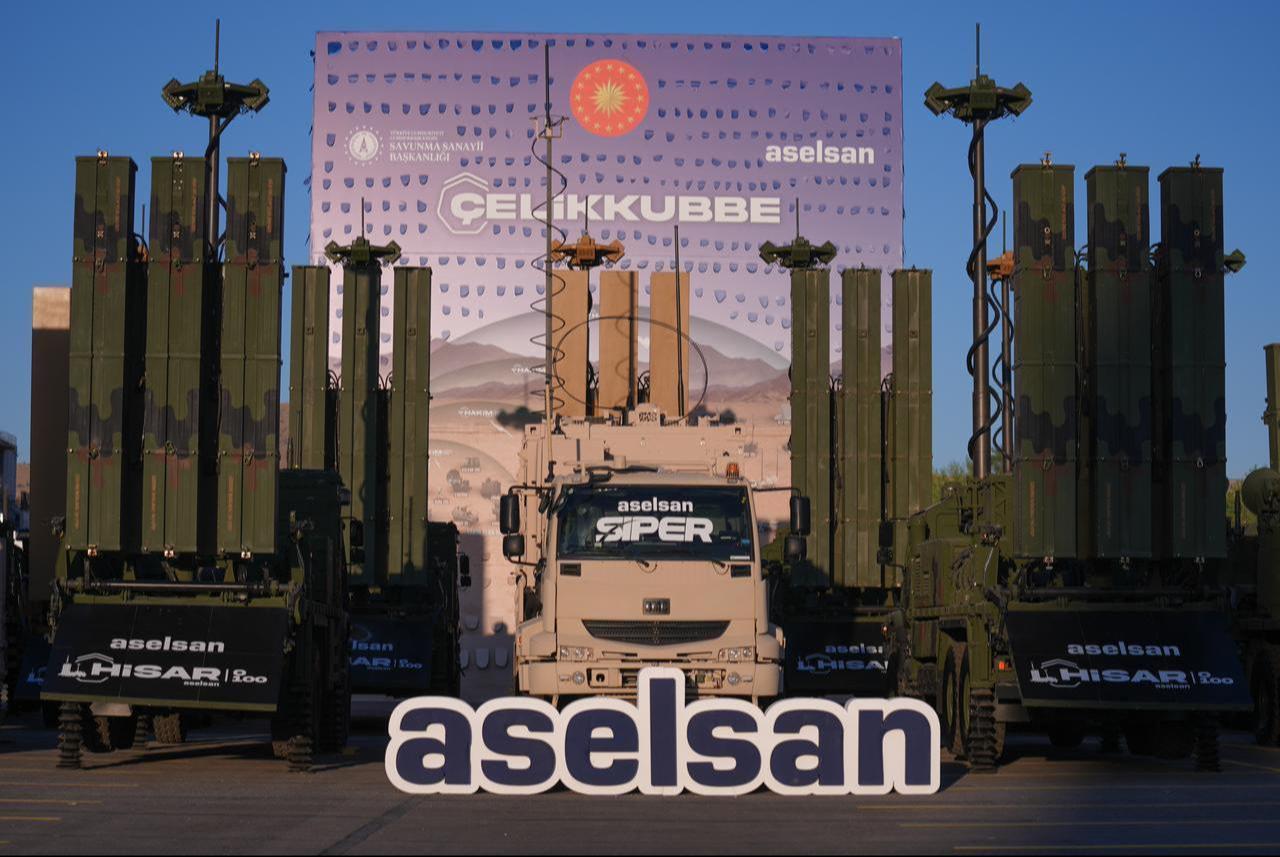
Baykar Technology Leader Selcuk Bayraktar announced the Kizilelma unmanned combat aircraft has entered low-rate serial production with Turkish Armed Forces deployment targeted for 2026, while confirming Türkiye's comprehensive Steel Dome air defense system will be operational by 2030.
Speaking on Turkish media outlet NTV's special broadcast on Wednesday at Istanbul Ataturk Airport, Bayraktar, who serves as Teknofest management board chairman, provided extensive assessments on the future of Turkish defense industry capabilities.

"Kizilelma is currently in low-rate serial production," Bayraktar stated.
"We made the first flight approximately one year before we promised the nation in December 2022—that was the first prototype," he noted.
He detailed the aircraft's development process: "Kizilelma was then rebuilt. All internal structures changed. We developed and produced the final producible prototype, and it entered the production phase. Tests are currently ongoing. The target is to deliver it to the Turkish Armed Forces inventory in 2026."
Bayraktar positioned Kizilelma as transformative for aerial warfare. "Kizilelma is the future of aviation combat. Fifth-generation aircraft will be the last manned combat aircraft. Just as Turkish armies won wars with UAVs in Karabakh in a way nobody expected, creating a paradigm shift, Kizilelma will make a similar transformation in air combat."
"The unmanned combat aircraft eliminates all negatives arising from the human factor. It creates air power not as a sixth generation but as a completely different element," he explained.
"Since there's no human, elements like training costs, physiological limits, and pilot risk are eliminated. Since humans are the system's most valuable element, unmanned aircraft like Kizilelma can be used in situations where we don't want to risk pilots," Bayraktar noted.

"It's possible for Kizilelma to take off from TCG Anadolu, but landing requires modification," Bayraktar clarified.
"Our navy is currently building a larger ship. It's in the design phase now. That ship will have arresting cables. The current design allows Kizilelma to take off from the ship, but it cannot land because the arresting system doesn't exist on TCG Anadolu and wasn't planned for this ship," he noted.
"Bayraktar TB3 became the first UAV capable of taking off and landing on short-runway ships. It did this automatically, and recently completed its 200th sortie," Bayraktar reported.
"It was tested in very different conditions. In fact, in front of delegations from 42 countries, two of them took off consecutively and each dropped two munitions on targets. Military attaches from 42 countries witnessed a historical first. We opened the doors of national naval aviation with a brand new concept," he added.
"Bayraktar TB3 entered the Turkish Armed Forces inventory, the Land Forces inventory. The land-based version was recently delivered to inventory. Compared to TB2, it has a greater munition carrying capacity and reaches higher altitudes. It's much more advanced, with a domestic engine made by TEI. In fact, it's the world's best aviation engine made in that class. It's now flying with our own engine," Bayraktar added.
"One of the major differences is having more payload capacity. It has an advanced turbo diesel engine. It has the capability to take off and land on short-runway ships, with special aerodynamics. All its systems are much more modern. Its altitude ceiling is higher than TB2. Its endurance is longer," he noted.

Bayraktar provided detailed insights into Türkiye's air defense capabilities and timeline.
"Air defense, as you know, is one of the world's most difficult technologies. It's not just technology—the element called air defense resembles this: It's like hitting a bullet with a bullet," he said.
"Therefore, attacking is easy, but defending is very difficult. To be a deterrent, having attack weapons is always more effective in this sense," he added.
He confirmed significant progress: "In terms of air defense systems technology, our country has developed air defense systems at every level. Especially, Aselsan and Roketsan created a layered system starting from the lowest level to address all levels. There's a structure developed from long ranges to close ranges and according to different target classes. There are systems put into practice."
"However, an air defense system to cover the entire country hasn't been produced yet. Production plans are now in place. In fact, Aselsan recently held a magnificent ceremony; there, a huge investment, a very large project was announced to the entire nation with our President's participation. As those investments are implemented and production accelerates, as far as I know, they're targeting the 2030s. Our country will have created full capacity in terms of air defense."

Bayraktar emphasized the strategic importance of offensive capabilities over purely defensive systems.
"How vital is this? Air defense weapons are very vital for country's defense. But when you look at it from a deterrence perspective, being deterrent and choosing defense is a faster path," he explained.
"Therefore, when you create attack capacity, the other side won't dare to attack, knowing you can hit them. You can later develop and convert the same technology into air defense weapons," he noted.
"Long-range missiles, kamikaze unmanned aerial vehicles, and aerial vehicles flying in swarms create an incredible deterrent force. By creating this attack capacity, you're actually defending yourself," he added.
He stressed the limitations of defensive systems: "I can also say this: There's no air defense system in the world that cannot be penetrated—they all have limits. When there's a sufficiently large attack, all air defense systems collapse. The main thing is to be a deterrent. Of course, you need to defend strategic facilities, but there's no limit to this either."
"The other side can send you many more missiles at much cheaper costs. When one projectile is fired, you have to fire several missiles to hit it. What if they fire 10 or 100 instead of one? Today, thousands of kamikaze drones can attack simultaneously. Then the air defense system, even if layered, collapses when it exceeds capacity, and the attacking side reaches its target. Therefore, they all have limits."
He added that defensive systems are far more expensive; attack capabilities can be developed faster and often adapted into air-defense weapons. Türkiye has developed the required air-defense technologies—now it needs to boost production of both defensive and offensive systems.
"Combat is chaos. The first thing lost in war is truth," Bayraktar stated.
"The biggest feature of UAV systems is that by transmitting live footage, they show decision-makers exactly what's happening. Compared to manned systems, UAVs both surveilled and found and neutralized targets," he added.
Bayraktar said Türkiye first used it in counterterrorism to break terrorism’s backbone, then adapted it into a conventional combat element to help liberate territories in Syria, Libya and Karabakh—appearing before the enemy with unexpected innovation.
Bayraktar noted that the TB2 is the world’s most effective UAV, having neutralized hundreds of tanks, dozens of air defense systems, helicopters, ships, and even grounded aircraft—showcasing its asymmetric impact.